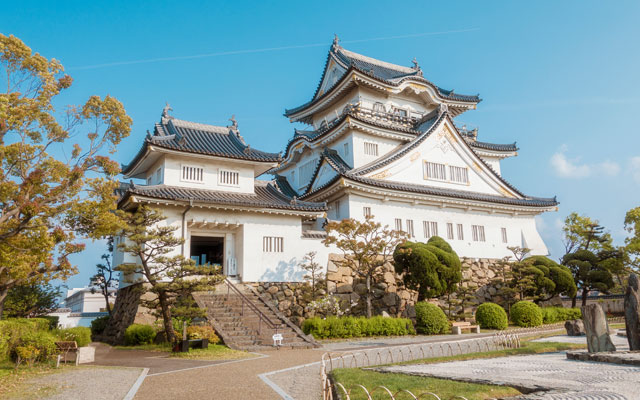Better known as a leisure destination, Osaka typically welcomes more incentives than international meetings and conferences. But the city believes that the recent G20 summit will help change its events mix
Fresh off the boat after a successful hosting of the 14th edition of the G20 summit earlier in June 2019 – the first G20 summit to be hosted by Japan – Osaka Prefecture is leveraging its improved status to attract more business events.
Asako Shiomi, manager MICE promotion department, Osaka Convention & Tourism Bureau (CVB), told TTGmice that the high-profile economic meeting administers a jab of confidence to event planners considering the city.

“The international market now has confidence in us, after seeing that we can handle such a high-level meeting,” Shiomi said. “We are working to increase the percentage of international MICE business here, to especially attract groups that bring about a large economic impact.”
While she acknowledges that Tokyo has traditionally been the leading city of choice among business event planners, based on its economic scale, that perception may change with Osaka’s track record in hosting the G20 summit.
Currently, the domestic MICE market is very strong for Osaka, especially for the 70,000m2 INTEX Osaka facility, according to its chief sales division, Takako Saito. But she too, is keen to reach out to the international market by shouting about the venue’s experience in delivering the G20 summit.
To strengthen the messaging, INTEX Osaka joined forces with three other private entities – ATC Hall, Hyatt Regency Osaka and Hotel Fukuracia Osaka Bay – to create an informal alliance, Osaka Bay Area MICE, in September 2018. Alliance partners boast a combined inventory of over 70 halls and conference spaces of varying sizes, 1,400 keys, F&B and retail outlets, all situated within walking distance from each other.
Yuji Inoue, business department deputy manager of ATC Hall and the spokesperson for Osaka Bay Area MICE, said: “Our facilities support each other, and we have combined our efforts in sales and marketing to develop international markets such as Singapore, China and Thailand.”
He believes that the formation of the alliance is a “step in the correct direction” and that the partnership enables them “to be bigger” on the back of G20.
In addition to promoting Osaka, a highly urbanised prefecture with 33 cities, Shiomi revealed that the secretariat of G20 also highlighted satellite cities such as Sakai, Kishiwada, Izumisano and Hannan, as the “city centre is already quite popular”.
That is why pilot projects are afoot, where several local governments are working towards renting out unique venues to international groups, such as the Japanese Garden in Sakai City’s Daisen Park, and Kishiwada Castle.
“There are so many castles in Japan, but not many are open for venue hire. For example, Kishiwada Castle grounds can hold 200 pax, and there’s a dojo in front of the castle where a kendo class and demonstration can be conducted for groups,” elaborated Nishikawa Tetsuji, Kishiwada City government’s section chief.
Just next to Kishiwada Castle stands Gofuso, a restaurant which can cater food for events at the castle, or introduce overseas delegates to a traditional kaiseki meal. Dining at the restaurant is also available, as it has 18 private rooms, the largest of which can hold 60 pax, up to a total of 220 pax.
Meanwhile, upcoming business event infrastructure include a soon-to-be-built integrated resort (IR) on Yumeshima Island, and the Setia Izumisano City Center (SICC) mixed development in Izumisano (see sidebar Developments to Watch).
In addition, the opening of the Sakai Performing Arts Center on October 1, 2019, will help address the shortage of business event facilities in Osaka, and help it compete against Tokyo for international gatherings, shared Koji Matsushita, the facility’s section chief.
Shiomi added: “We have very limited space in Osaka, and it’s difficult to find a slot for international groups. We’re very happy to have a new IR and the SICC. We hope to build Osaka’s MICE sector on Setia’s reputation, as our target is Asia. Setia is from Malaysia, and they have good connections in the region.”
But the industry is not without its challenges. For instance, English is still not widely spoken in the sector.
“Sometimes, when I have a potential international lead that I relay (to the other cities in the prefecture), I find that it is hard to communicate. We need more English speakers to welcome and assist these international groups,” Shiomi said.
This is reinforced by Sakai City co-ordinator Sakaguchi Munetsugu, who works for EXSA (Exciting Sakai), a non-profit organisation under the Sakai government.
“We are encouraging companies to translate menus and signs to English to court more foreign visitors, as well as liaising with Osaka Tourism Bureau to improve activities (for MICE groups) in the city,” he added.
For INTEX Osaka’s Saito, she also acknowledged that although the language barrier is a problem, she will usually hire translators to help with international groups.
With the numerous developments and improvements in the MICE space, there is no doubt the kinks will be ironed out in good time.
“We believe we have a bright future ahead. It will all come together in 2025, and I think it’ll be a different atmosphere by then,” Shiomi concluded.





















